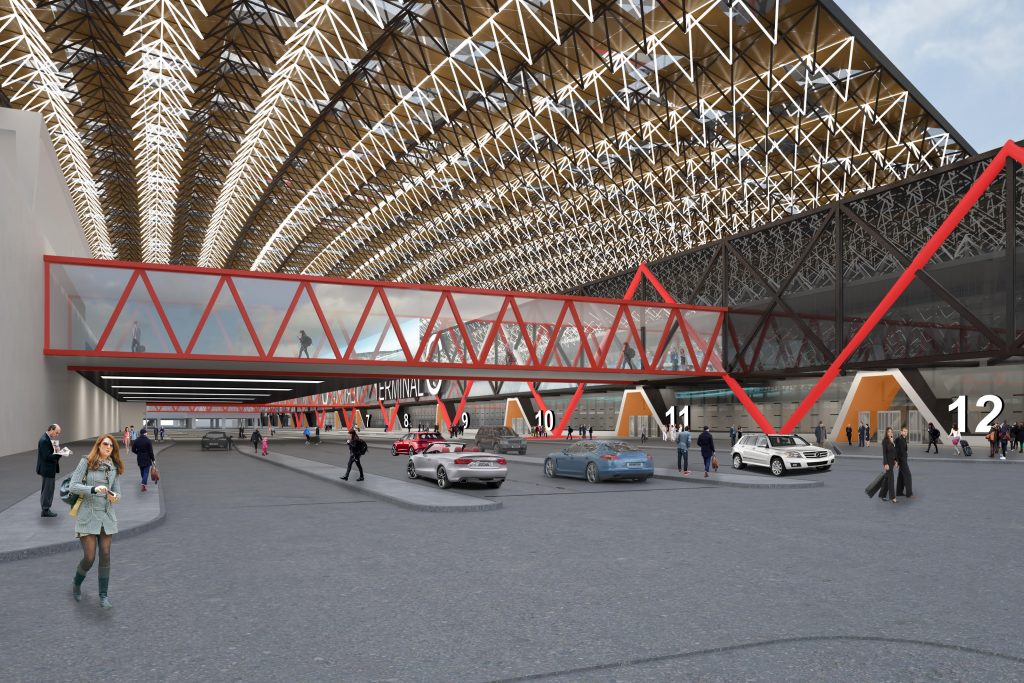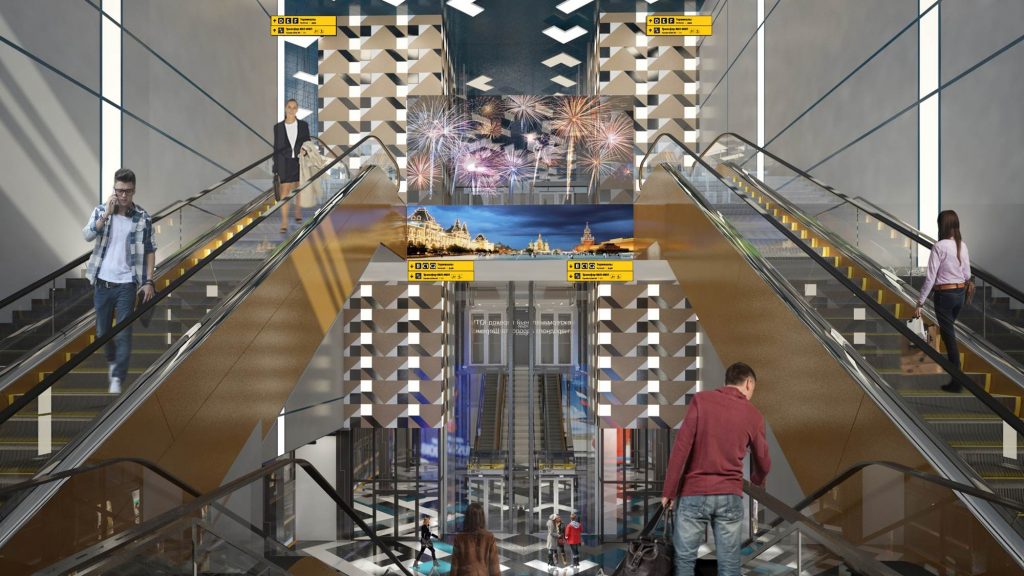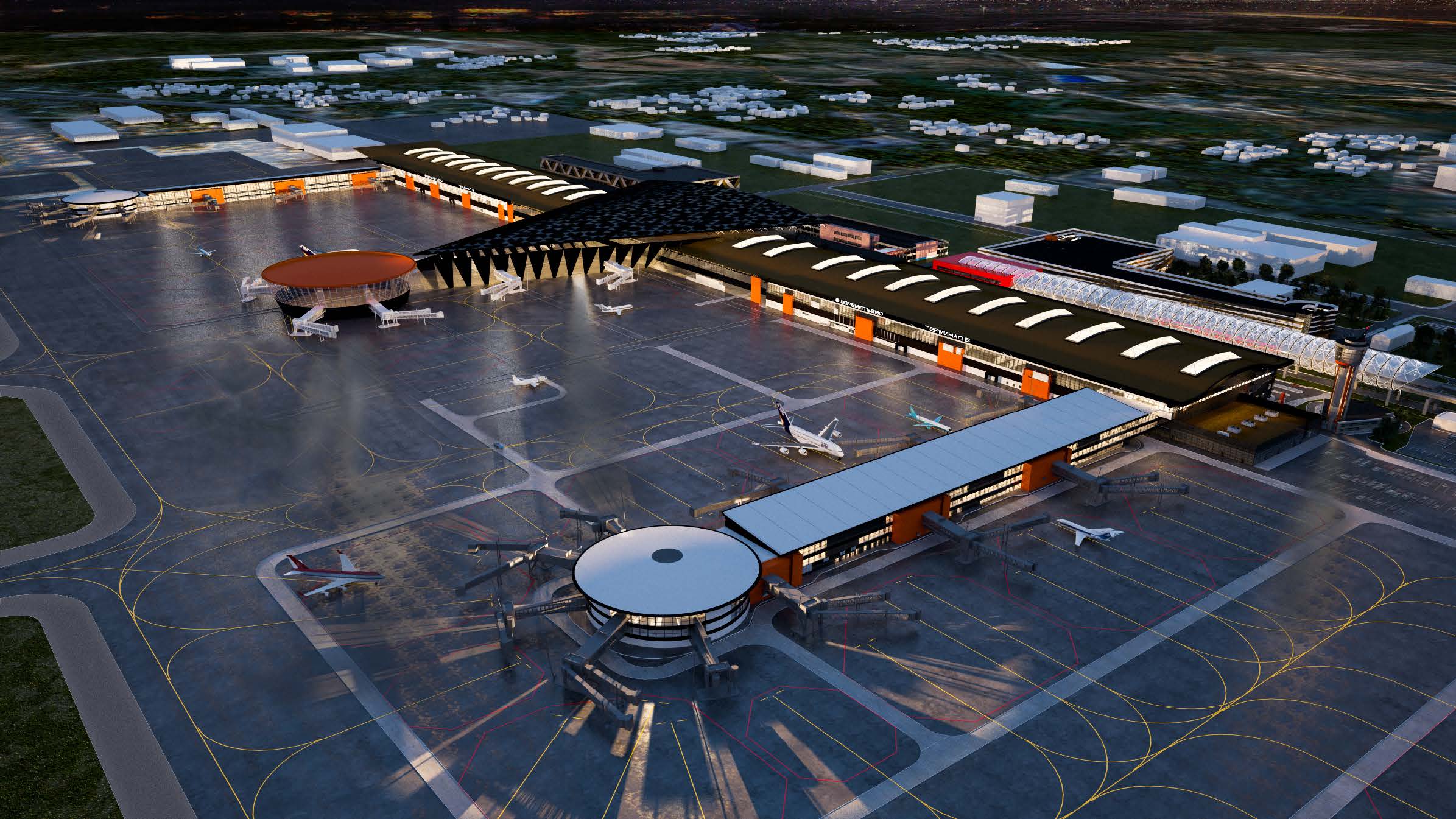Estimated reading time: 3 min
RMJM Serbia Appointed as Designers for Sheremetyevo Airport Northern Complex
As part of Sheremetyevo International Airport modernisation program carried out in preparation for the 2018 FIFA World Football Cup, RMJM Serbia was invited to design the interior of the new Terminal B in the Northern Complex in 2016. The concept was so well received that RMJM was later appointed to design other areas at Sheremetyevo International Airport, including two inter-terminal stations, Terminal B facade and parking, and Terminal buildings C1 and C2.
In order to convey the traditions, strength and progressiveness that characterise modern-day Russia, RMJM drew inspiration from Russian Constructivism, a seminal art movement of the early 20th century.
Constructivism was integrated strongly into every aspect of the design. Everything, from the space organization to the geometric forms and palette used in our design for Terminal B, C1, C2 and the inter-terminal stations is based on the work of renowned Constructivist artists such as Vladirim Tatlin, Nahum Gabo, Alexandra Vesnina, Alexander Rodchenko, El Lissitzky and Yakov Chernikhov.

The concept for Sheremetyevo Airport inter-terminal stations celebrates the work of two eminent Constructivist artists, Ljuba Popova and Varvara Stepanova. Much like the artists whose work this project references, the two connected stations become permanently linked.
In order to convey the universality and timeless character of art, the Constructivist masterpieces are integrated with cutting edge technology to shape the space around the movement of passengers.

Located just north of Moscow, Sheremetyevo International airport (SVO) is the largest Russian airport in passenger and cargo traffic, take-off and landing operations and airport area. In 2005, SVO launched a large-scale infrastructure modernization program which strengthened its position as one of the leading air hubs in Europe. Sheremetyevo airport’s development plan for 2030, in line with the Russian Federation Transport Strategy, provides an increase in its handling capacity up to 64 million people and a 25% increase in the transit flow.


